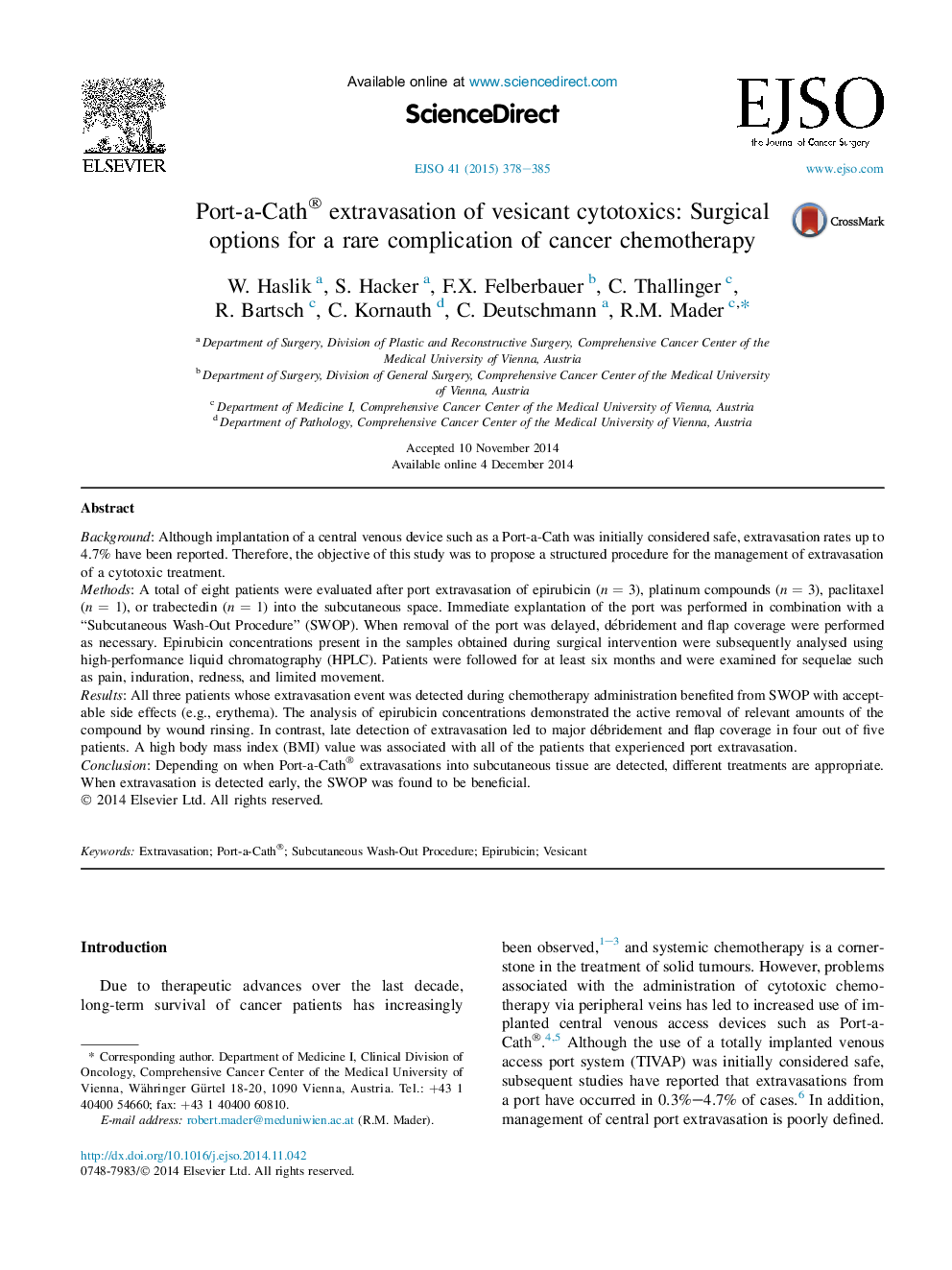| Article ID | Journal | Published Year | Pages | File Type |
|---|---|---|---|---|
| 6191512 | European Journal of Surgical Oncology (EJSO) | 2015 | 8 Pages |
BackgroundAlthough implantation of a central venous device such as a Port-a-Cath was initially considered safe, extravasation rates up to 4.7% have been reported. Therefore, the objective of this study was to propose a structured procedure for the management of extravasation of a cytotoxic treatment.MethodsA total of eight patients were evaluated after port extravasation of epirubicin (n = 3), platinum compounds (n = 3), paclitaxel (n = 1), or trabectedin (n = 1) into the subcutaneous space. Immediate explantation of the port was performed in combination with a “Subcutaneous Wash-Out Procedure” (SWOP). When removal of the port was delayed, débridement and flap coverage were performed as necessary. Epirubicin concentrations present in the samples obtained during surgical intervention were subsequently analysed using high-performance liquid chromatography (HPLC). Patients were followed for at least six months and were examined for sequelae such as pain, induration, redness, and limited movement.ResultsAll three patients whose extravasation event was detected during chemotherapy administration benefited from SWOP with acceptable side effects (e.g., erythema). The analysis of epirubicin concentrations demonstrated the active removal of relevant amounts of the compound by wound rinsing. In contrast, late detection of extravasation led to major débridement and flap coverage in four out of five patients. A high body mass index (BMI) value was associated with all of the patients that experienced port extravasation.ConclusionDepending on when Port-a-Cath® extravasations into subcutaneous tissue are detected, different treatments are appropriate. When extravasation is detected early, the SWOP was found to be beneficial.
